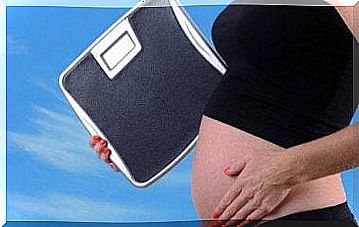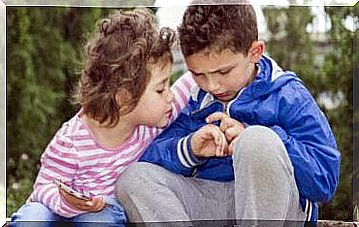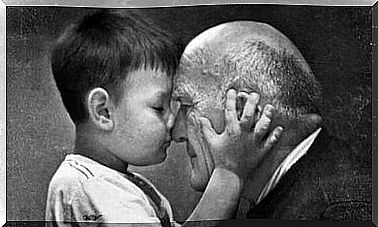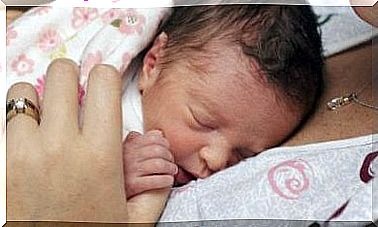Babies Born With Spina Bifida – Parenthood
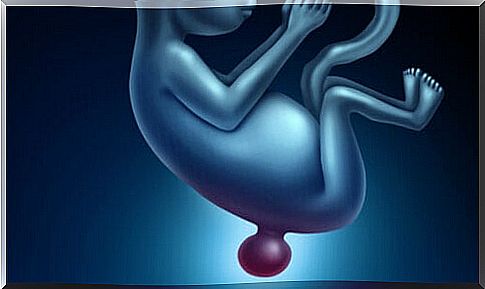
Symptoms of spina bifida
Being a malformation of the spine, spina bifida can cause physical and intellectual disabilities. Symptoms vary in severity because there are several types of spina bifida. So, it will mainly depend on:
- The size of the opening.
- On which part of the column it occurs. The closer it is to the upper back, the more serious the consequences will be.
- Whether the nerves and spinal cord have been affected or not.
By following these criteria, we find three types of spina bifida. First there is the open spina bifida, subdivided into myelomeningocele and meningocele. Then we have the hidden spina bifida.
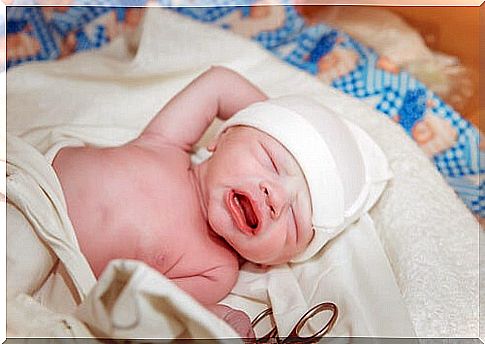
Meningocele
Meningocele affects the meninges, the membranes that cover and protect the brain and spinal cord. When they come out through the opening formed in the spine, a sac filled with fluid (meningocele) is created.
Babies with this disease can suffer from various health problems. These will depend on the damage to the nerves surrounding the spine. For example, they may have muscle paralysis of varying degrees. Or, they will have learning disabilities, such as Attention Deficit Hyperactivity Disorder (ADHD).
Myelomeningocele
When we talk about spina bifida, it usually refers to myelomeningocele. It is the most serious variety of this malformation. Indeed, it causes disabilities ranging from the most moderate to the most serious, even to the loss of movement or sensitivity of the legs.
It occurs when the meninges and the lower end of the spinal cord protrude through the orifice in the spine and form a sac filled with fluid. This sac, which protrudes from the baby’s back, can burst during childbirth. It thus exposes the spinal cord and nerves.
In addition to bone or muscle problems, it is common for babies with this defect to have hydrocephalus. This is a buildup of fluid in or around the brain.
The hidden spina bifida
It is the mildest form of spina bifida and may go unnoticed. As the name suggests, in this variety of the syndrome, the malformation is “hidden” under the skin.
Even if it is hidden, there may be birthmarks or a dimple on the skin around the opening. In addition, inside, the cord can be attached to the tissue, instead of being detached. Thus, the nerves are not affected.
Most babies with spina bifida occulta don’t have long-term problems. Also, it is often detected later in childhood or even after they are adults.
What are the causes of spina bifida?
The causes of spina bifida are not known. It is necessary to study the factors involved in the development of this malformation, such as genetics or the environment. However, it is known for sure that it is linked to low levels of folic acid.
Spina bifida appears in the first few weeks of pregnancy. It often forms before a pregnant woman even knows she is pregnant. Taking folic acid during pregnancy (400 micrograms per day) helps reduce the risk of its occurrence. However, this does not guarantee a healthy pregnancy.
Other tips can be followed to prevent this malformation:
- Consult with your doctor about the best treatment to follow. Just as no two people are the same, neither are two pregnancies the same. It is best to follow a personalized treatment that meets all the needs of mother and child.
- Learn appropriately about the components of the medications, vitamins, and supplements you are taking. During pregnancy, the body reacts differently to certain medications.
- Control your body temperature. A high fever can increase the chances of developing spina bifida in the baby.
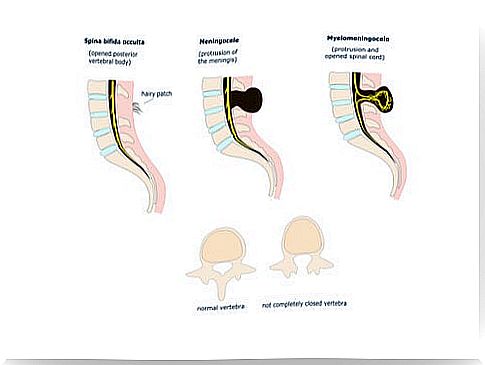
Treatment
Treatment for spina bifida varies depending on its severity. Depending on the systems involved, children will need the support of different specialists in the long term. This includes not only doctors, but also therapists, social workers and associations that provide support and understanding.
In babies with spina bifida occulta, no treatment will be necessary. If the spinal cord is anchored, surgery will be needed to separate it from the tissue. Babies usually do not have any problems after the operation, although the marrow may be re-anchored.
On the other hand, babies with meningocele must be operated on during the first months of their life. The surgery places the meninges in the body and closes the hole.
The process is similar with a myelomeningocele. The baby must be operated on, but between the first and second day after birth. If it is detected in the early stages of pregnancy, it can be operated on during the 25th week to correct the defect. It will also be necessary to operate on the hydrocephalus in case the baby has it.
